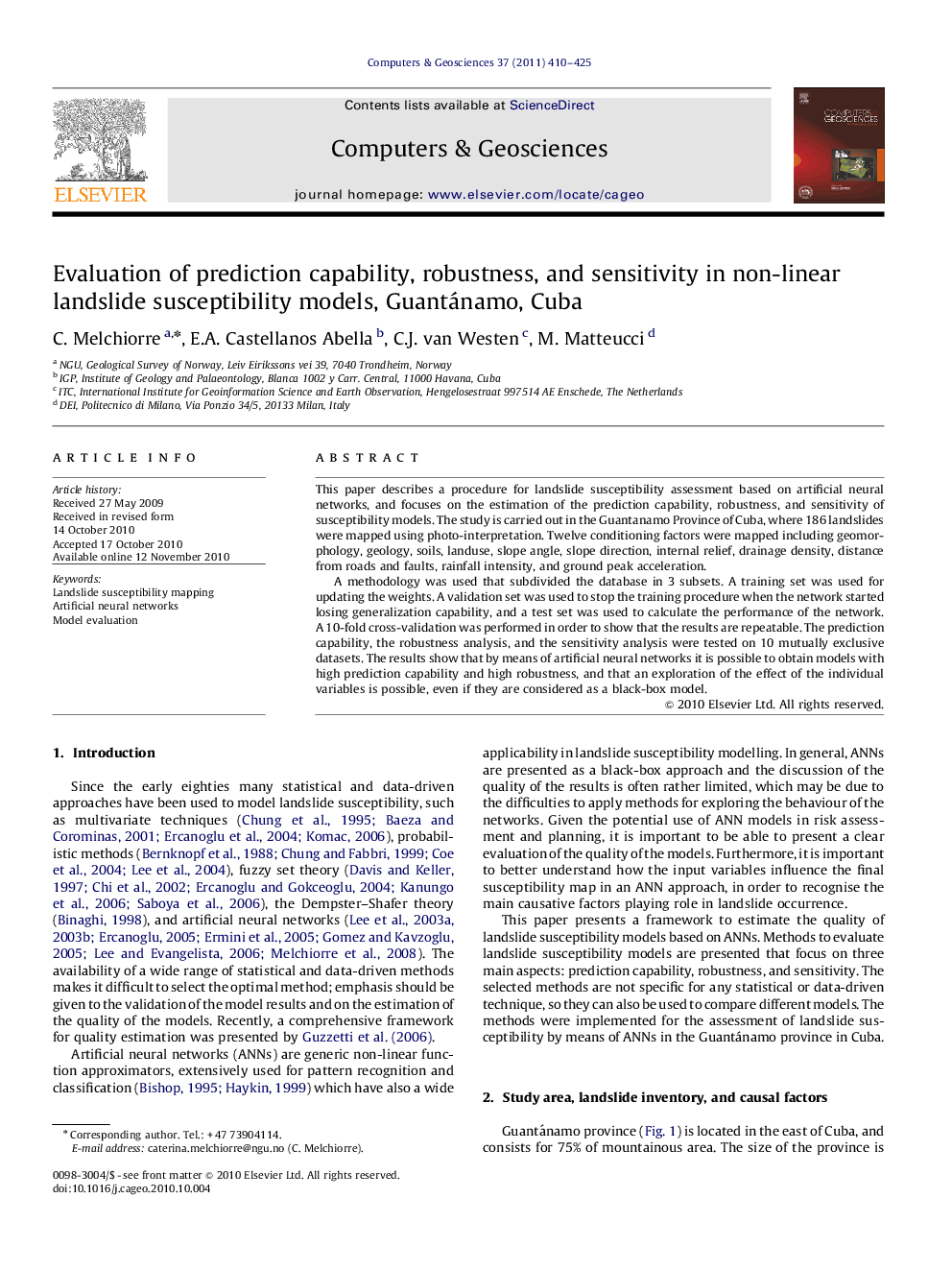| Article ID | Journal | Published Year | Pages | File Type |
|---|---|---|---|---|
| 507788 | Computers & Geosciences | 2011 | 16 Pages |
This paper describes a procedure for landslide susceptibility assessment based on artificial neural networks, and focuses on the estimation of the prediction capability, robustness, and sensitivity of susceptibility models. The study is carried out in the Guantanamo Province of Cuba, where 186 landslides were mapped using photo-interpretation. Twelve conditioning factors were mapped including geomorphology, geology, soils, landuse, slope angle, slope direction, internal relief, drainage density, distance from roads and faults, rainfall intensity, and ground peak acceleration.A methodology was used that subdivided the database in 3 subsets. A training set was used for updating the weights. A validation set was used to stop the training procedure when the network started losing generalization capability, and a test set was used to calculate the performance of the network. A 10-fold cross-validation was performed in order to show that the results are repeatable. The prediction capability, the robustness analysis, and the sensitivity analysis were tested on 10 mutually exclusive datasets. The results show that by means of artificial neural networks it is possible to obtain models with high prediction capability and high robustness, and that an exploration of the effect of the individual variables is possible, even if they are considered as a black-box model.
